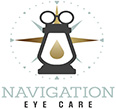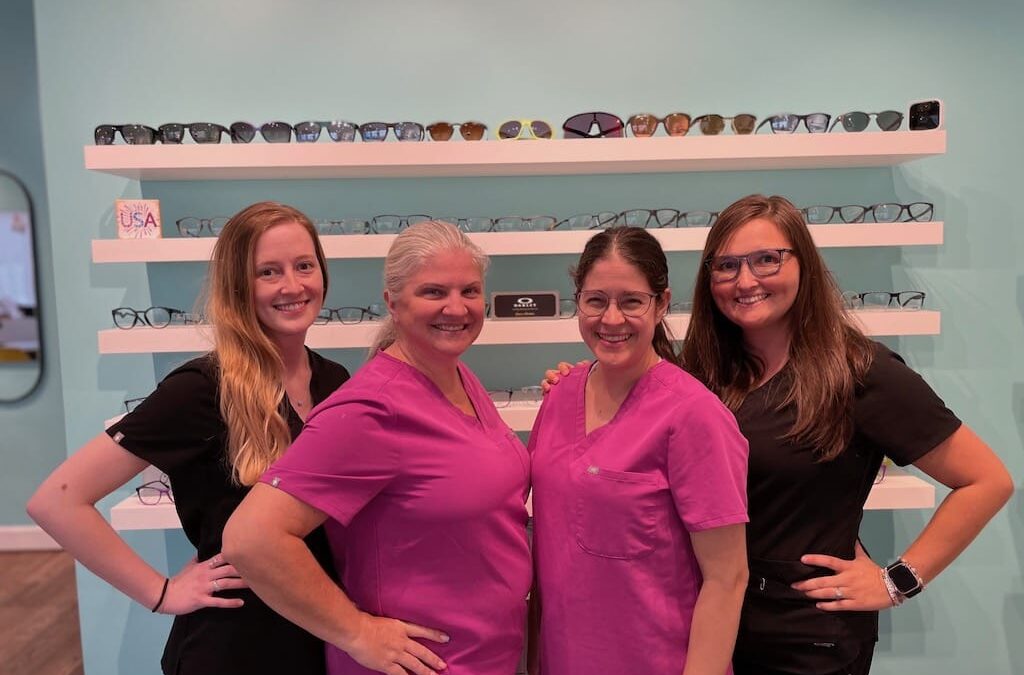Digital Downtime: Managing Screen Fatigue for Relief from Dry Eyes
In our increasingly digital world, screens have become an integral part of our daily lives. Whether it’s for work, entertainment, or staying connected with loved ones, we spend more time in front of screens than ever before. However, this digital dependence often comes at a cost: screen-related eye fatigue and dry eyes. In this blog post, we’ll explore the causes of this discomfort and provide valuable tips, including the role of an Optometrist Chesapeake VA, in managing screen fatigue and finding relief from dry eyes.
The Digital Era’s Impact on Our Eyes
Digital eye strain, also known as computer vision syndrome, is a common condition caused by prolonged screen use. The symptoms of digital eye strain include dry eyes, eye fatigue, headaches, blurred vision, and neck and shoulder pain. It can affect people of all ages and is especially prevalent among those who use digital devices for hours each day.
Causes of Dry Eyes and Eye Fatigue
- Reduced Blinking: When we’re focused on a screen, we tend to blink less frequently. Blinking is essential because it helps distribute tears evenly across the surface of the eye.
- Blue Light Exposure: Screens emit blue light, which can contribute to eye strain and disrupt sleep patterns if used before bedtime.
- Poor Screen Ergonomics: Improper screen positioning or lighting conditions can strain our eyes and neck muscles, leading to discomfort.
- Tear Evaporation: Dry indoor environments and prolonged screen use can increase tear evaporation, exacerbating dry eyes.
Managing Screen Fatigue and Dry Eyes
- Follow the 20-20-20 Rule:
- Every 20 minutes, take a 20-second break.
- During these breaks, look at something at least 20 feet away to relax your eye muscles.
- Optimize Screen Ergonomics:
- Ensure your screen is at eye level and positioned about 20 inches away from your eyes.
- Adjust screen brightness and contrast to comfortable levels.
- Use an anti-glare screen protector to reduce glare.
- Blink Regularly:
- Make a conscious effort to blink more often when using screens.
- Consider using lubricating eye drops to keep your eyes moist.
- Limit Screen Time:
- Set daily limits on screen time, especially for recreational use.
- Establish tech-free zones, such as the bedroom, to encourage better sleep.
- Blue Light Filters:
- Use blue light filters or blue light-blocking glasses to reduce the impact of blue light on your eyes.
- Stay Hydrated:
- Drinking plenty of water helps maintain overall hydration, which can benefit your eyes.
- Consult Navigation Eye Care:
- If you experience persistent dry eyes or severe discomfort, it’s essential to consult an Optometrist Chesapeake VA. They can conduct a comprehensive eye exam to identify underlying issues and recommend appropriate treatments.
The Role of an Optometrist Chesapeake VA
Optometrists are trained to diagnose and treat various eye conditions, including dry eyes caused or exacerbated by digital device use. They can provide personalized recommendations, prescribe lubricating eye drops, and offer therapies like punctal plugs to help retain tears. In more severe cases, optometrists may recommend specialized treatments to address the root causes of dry eyes.
Screen fatigue and dry eyes are common challenges in our digital age, but they can be managed effectively with proper care and strategies. By following the tips mentioned above and consulting an Optometrist Chesapeake VA when necessary, you can find relief from dry eyes and enjoy comfortable, healthy vision while navigating the digital world. Remember, taking care of your eyes is an investment in your overall well-being.
The Tears That Heal: Exploring the Science of Tear Production and Dry Eye
Tears are often associated with emotions, but did you know that they also play a crucial role in maintaining the health of our eyes? Tear production is a complex process that keeps our eyes lubricated and nourished. However, for many individuals, this delicate balance can be disrupted, leading to a common condition known as dry eye. Let’s explore the science of tear production, the causes of dry eye, and how Navigation Eye Care’s Optometrist Chesapeake VA can provide relief and treatment for your dry eyes.
Understanding Tear Production
Tears are far more than just water. They are a carefully balanced mixture of water, oils, mucus, and special proteins. This combination serves several essential functions:
- Lubrication: Tears keep the eye’s surface smooth and moist, preventing discomfort and friction with every blink.
- Nourishment: Tears supply oxygen and nutrients to the cornea, the eye’s clear outer layer.
- Protection: Tears contain enzymes that help reduce the risk of eye infections.
- Clear Vision: A smooth tear film is necessary for clear and stable vision.
The Three Layers of Tears
Tears consist of three distinct layers:
- Outer Oil Layer: Produced by the meibomian glands, this layer prevents tears from evaporating too quickly.
- Middle Aqueous Layer: This is the watery component that makes up the majority of tears.
- Inner Mucus Layer: The mucus layer helps tears adhere to the eye’s surface.
Causes of Dry Eye
Dry eye occurs when there is an imbalance in tear production or quality. This can result from various factors, including:
- Age: Tear production tends to decrease with age, making older individuals more susceptible to dry eye.
- Medical Conditions: Conditions like diabetes, rheumatoid arthritis, and thyroid disorders can contribute to dry eye.
- Medications: Certain medications, such as antihistamines and antidepressants, can reduce tear production.
- Environmental Factors: Dry or windy environments, as well as prolonged screen time, can increase tear evaporation.
- Eyelid Issues: Problems with the meibomian glands, which produce the oil layer of tears, can lead to evaporative dry eye.
Symptoms of Dry Eye
Dry eye can cause a range of symptoms, including:
- Stinging or burning sensation
- Redness
- Blurred vision
- Sensitivity to light
- Eye fatigue
- Watery eyes (a reflex response to dryness)
If you experience any of these symptoms, it’s essential to consult Navigation Eye Care for a comprehensive eye examination and diagnosis.
Treatment and Relief
Treatment for dry eye varies depending on the underlying causes and severity of the condition. Navigation Eye Care’s Optometrist Chesapeake VA may recommend:
- Artificial Tears: Lubricating eye drops can help relieve dryness and discomfort.
- Lifestyle Modifications: Adjusting environmental factors, such as using a humidifier or taking breaks during screen time, can provide relief.
- Prescription Medications: In some cases, your optometrist may prescribe medications to reduce inflammation or stimulate tear production.
- Meibomian Gland Expression: For evaporative dry eye, your optometrist may perform a procedure to unblock the meibomian glands and improve oil secretion.
- Punctal Plugs: These tiny plugs can be inserted into the tear ducts to slow down tear drainage, keeping the eyes moist.
Tear production is a fascinating and essential process that keeps our eyes healthy and comfortable. If you experience symptoms of dry eye, don’t hesitate to consult and schedule and appointment with Navigation Eye Care’s Optometrist Chesapeake VA. She can diagnose the underlying causes and provide effective treatments to restore the balance of your tears, allowing you to enjoy clear, comfortable vision once again. Remember, the tears that heal are the tears that protect and nourish our precious eyes.

